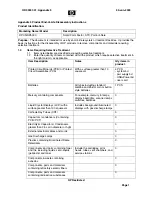
System Description
3.4.13
3.4.13 Heater (safe)
The heater is mounted in the safe to the right of the recycling module lower unit (see
During cold weather, the heater helps maintain the operating temperature in the safe area of the system.
3.4.14
3.4.14 Safe Lock
There are many types of safes and safe locks available for the system and is dependent upon customer
requirements.
3.4.15
3.4.15 System Switches
System switches monitor the open or closed position of the system fascia, upper chassis rear door, and
safe door.
3.4.16
3.4.16 Alarm Sensors
Alarm sensors with a network interface report to a network and send alarm signals to an alarm-monitor-
ing system. Alarm sensors report during or after one of the following events:
•
The safe door is opened or closed (door status).
•
The safe door is opened, but the combination was not entered (burglary) available on single combi-
nation mechanical lock and on electronic locks.
•
The duress combination is entered (anti-ambush) available on single combination mechanical lock
and on electronic locks.
•
Primary bolt work position sensor detects whether the bolt work is open or closed.
•
Secondary lock bolt position sensor.
Alarm sensors with a network interface provide their own battery backup. The system uses the safe door
switch to distinguish between an authorized or unauthorized entry before sending an alarm signal.
3.4.17
3.4.17 Seismic Detectors
Seismic detectors sense physical blows to the system safe. Alarm sensors with a network interface must
be present for the seismic detectors to function.
3.4.18
3.4.18 Third-party Alarms
may want to install their own alarm systems within the safe. An area within the safe is desig-
nated for third-party alarm installation.
3.4.19
3.4.19 Heat Thermostat
The heat thermostat, integral to the basic alarms panel, senses when the temperature inside the system
safe exceeds a certain level. If this level is exceeded, the heat thermostat initiates an alarm.
Copyright © 2021, Diebold Nixdorf
01750337284 C
3-44















































